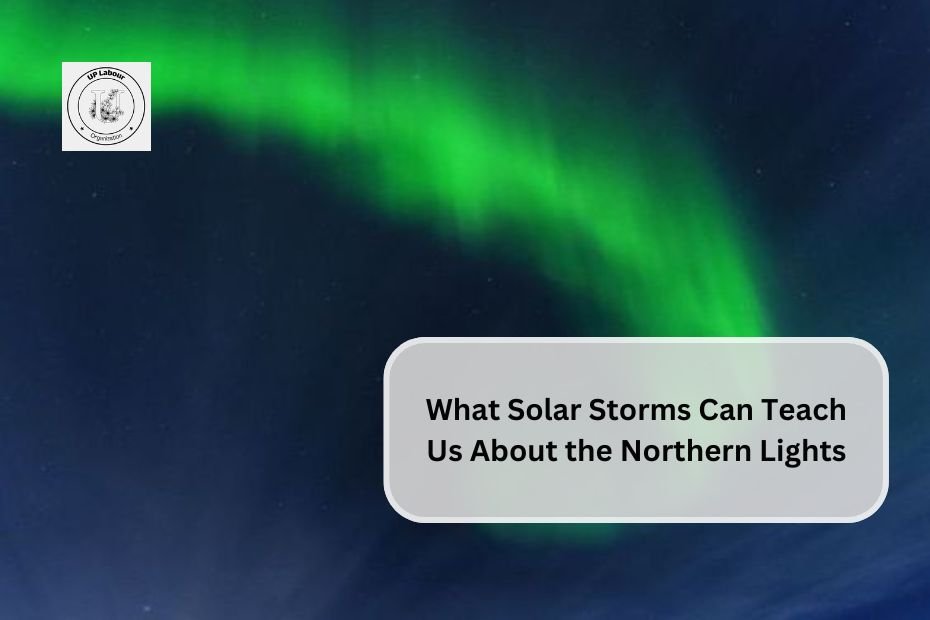The Northern Lights, or aurora borealis, are a stunning natural phenomenon primarily observed on Earth, but similar displays occur on other planets and celestial bodies throughout the solar system and beyond. Understanding the science behind these extraterrestrial auroras not only enhances our knowledge of planetary atmospheres and magnetic fields but also provides insights into the fundamental processes that govern auroral activity across different environments.
The Mechanism of Auroras
Auroras are caused by the interaction between charged particles from the sun and a planet’s magnetic field and atmosphere. Here’s how it works:
- Solar Wind: The sun emits a continuous stream of charged particles known as solar wind. When this solar wind reaches a planet with a magnetic field, it can interact with that field, causing particles to be funneled toward the poles.
- Magnetic Field Interaction: As these charged particles enter the planet’s atmosphere, they collide with gas molecules, exciting them and causing them to emit light—a process known as electron precipitation. The specific colors of the auroras depend on the type of gas involved; for example, oxygen produces green and red hues, while nitrogen can produce blue and purple colors.
- Planetary Differences: The strength of a planet’s magnetic field and its atmospheric composition significantly influence the characteristics of its auroras. For instance, Jupiter has a much stronger magnetic field than Earth, resulting in more intense auroras.
Auroras on Other Celestial Bodies
1. Jupiter
Jupiter is known for having some of the most spectacular auroras in the solar system. The planet’s magnetic field is about 20,000 times stronger than Earth’s, allowing it to capture more charged particles from both the solar wind and its volcanic moon, Io. Io’s intense volcanic activity releases sulfur dioxide gas into space, which contributes additional particles that fuel Jupiter’s auroras. These displays are often observed in ultraviolet light and can be thousands of times brighter than those seen on Earth.
2. Saturn
Saturn also exhibits auroral activity, particularly at its poles. Observations from the Cassini spacecraft revealed that Saturn’s auroras are influenced by both solar wind and its own internal processes. Like Jupiter, Saturn has a strong magnetic field that captures solar particles, creating beautiful light displays primarily in ultraviolet wavelengths.
3. Mars
Mars presents a different case; while it lacks a global magnetic field like Earth or Jupiter, localized magnetic fields exist in certain regions of its crust. These areas can still produce auroras when solar wind interacts with them. The Mars Atmosphere and Volatile Evolution (MAVEN) mission has detected auroral activity on Mars, providing insights into how solar storms affect the Martian atmosphere.
4. Brown Dwarfs
Recent discoveries have identified auroras on brown dwarfs—objects that are too massive to be considered planets but not massive enough to sustain nuclear fusion like stars. For example, astronomers found that LSR J1835+3259, a brown dwarf located about 18.5 light-years away, exhibits auroras potentially millions of times brighter than those on Earth due to its strong magnetic field. These findings suggest that auroras may be common among various celestial bodies beyond our solar system.
Implications for Exoplanet Research
The study of auroras on other planets has significant implications for exoplanet research:
- Magnetic Field Measurement: Detecting auroras on exoplanets could provide valuable information about their magnetic fields. Strong magnetic fields are essential for protecting atmospheres from solar wind erosion, which is crucial for maintaining conditions suitable for life.
- Atmospheric Composition: Auroral emissions can help scientists infer the composition of exoplanetary atmospheres based on the colors observed during these phenomena.
- Potential Habitability: Understanding how a planet’s atmosphere interacts with solar activity through auroras can shed light on its habitability potential. Planets with protective magnetic fields may have better chances of supporting life by retaining their atmospheres against solar winds.
Conclusion
The study of extraterrestrial auroras expands our understanding of planetary atmospheres and magnetic fields across the universe. By exploring how solar activity influences these mesmerizing displays beyond Earth, scientists gain insights into fundamental processes that govern atmospheric dynamics and potential habitability on other planets. As technology advances and we continue to explore our solar system and beyond, the mysteries surrounding auroras will undoubtedly reveal more about the complex interactions between celestial bodies and their environments.

